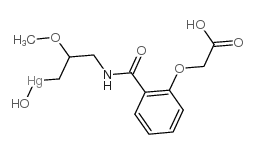The effects of singlet oxygen produced by photodynamic action on the mitochondrial permeability transition differ in accordance with the localization of the sensitizer.
G Moreno, K Poussin, F Ricchelli, C Salet
文献索引:Arch. Biochem. Biophys. 386(2) , 243-50, (2001)
全文:HTML全文
摘要
We have examined whether the effects of singlet oxygen (1O2) produced by photodynamic action on the mitochondrial permeability transition (PT) can be modulated by the localization of photosensitizers in irradiated mitochondria. We have previously shown that oxidation due to 1O2 photogenerated in hematoporphyrin (HP)-loaded mitochondria can prevent opening of the PT pores, likely after degradation of some critical histidines (Salet et al, 1997, J. Biol. Chem. 272, 21938-21943). Equally, in the present study we have irradiated mitochondria in the presence of a structurally different photosensitizer producing 1O2, namely 4,5',8-trimethylpsoralen (TMP). Fluorescence studies show that TMP binds to protein sites which differ from those of HP. In sharp contrast with HP, TMP-driven photodynamic action triggers per se pore opening. Interestingly, this inducing effect is inhibited when TMP-treated mitochondria are irradiated after addition of mersalyl, a specific reagent protecting thiol groups of the inner mitochondrial membrane that are oriented toward the external hydrophilic phase. This fact suggests that 1O2-mediated thiol oxidation is responsible for TMP-photoinduced pore opening. Taken together, these findings suggest that 1O2 can activate or inactivate a cellular function such as mitochondrial PT depending on the site where it is produced in the mitochondrial membrane.
相关化合物
| 结构式 | 名称/CAS号 | 分子式 | 全部文献 |
|---|---|---|---|
 |
汞撒利酸
CAS:486-67-9 |
C13H17HgNO6 |
|
Cheminformatics analysis of assertions mined from literature...
2010-01-01 [Chem. Res. Toxicol. 23 , 171-83, (2010)] |
|
Interaction of mitochondrial phosphate carrier with fatty ac...
2000-05-01 [Int. J. Biochem. Cell Biol. 32(5) , 499-508, (2000)] |
|
Reactive oxygen species inhibit the succinate oxidation-supp...
2002-04-10 [FEBS Lett. 516(1-3) , 15-9, (2002)] |
|
High efficiency of energy flux controls within mitochondrial...
2011-12-01 [Biochim. Biophys. Acta 1807(12) , 1549-61, (2011)] |
|
Dissecting the molecular mechanism by which NH2htau and Aβ1-...
2013-07-01 [Biochim. Biophys. Acta 1827(7) , 848-60, (2013)] |